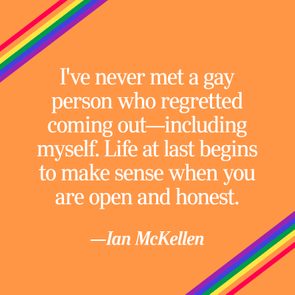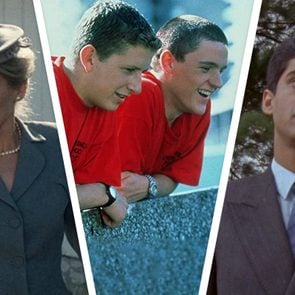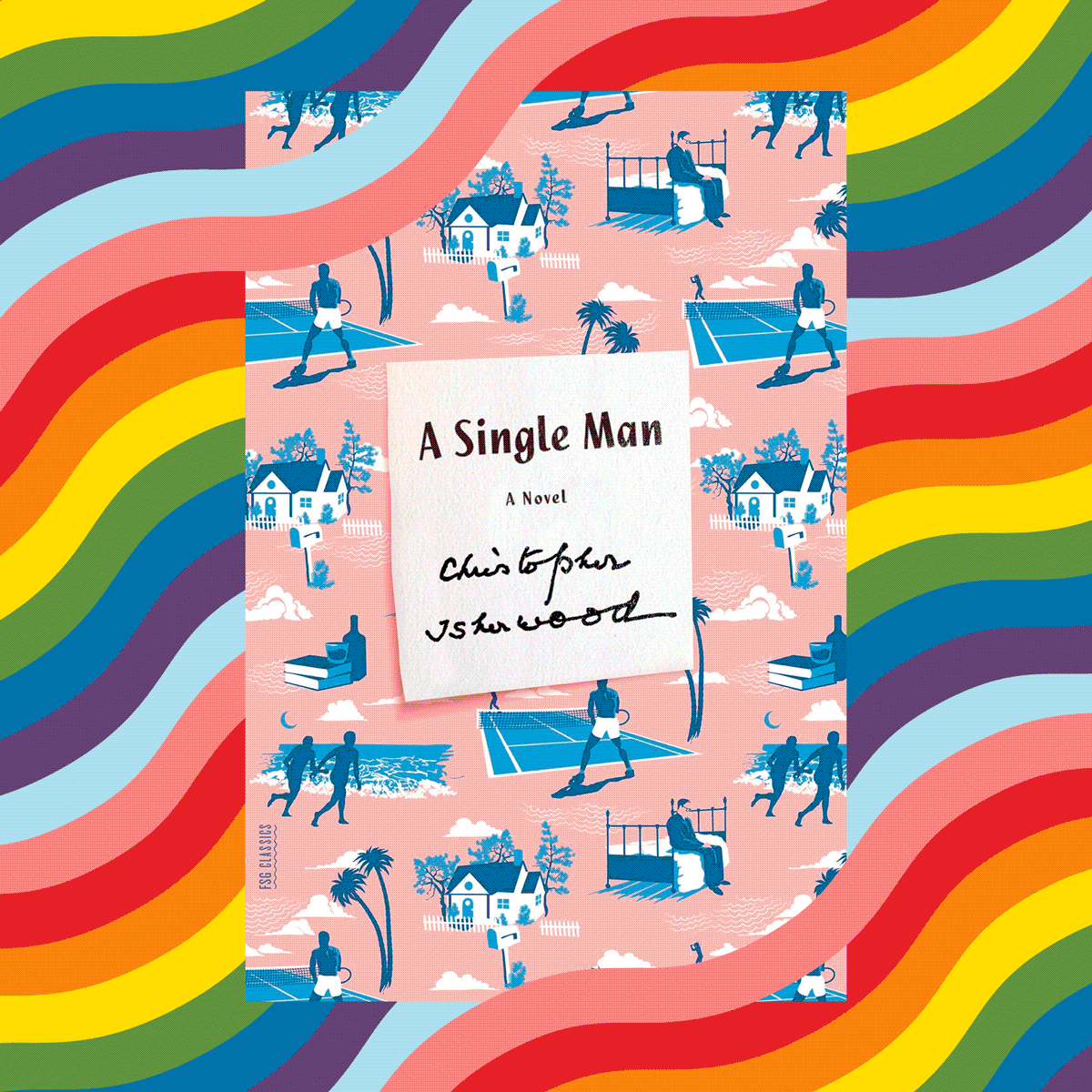I’m a Drag Queen—Here’s What Really Happens at a Drag Queen Story Hour
Updated: Jun. 06, 2023
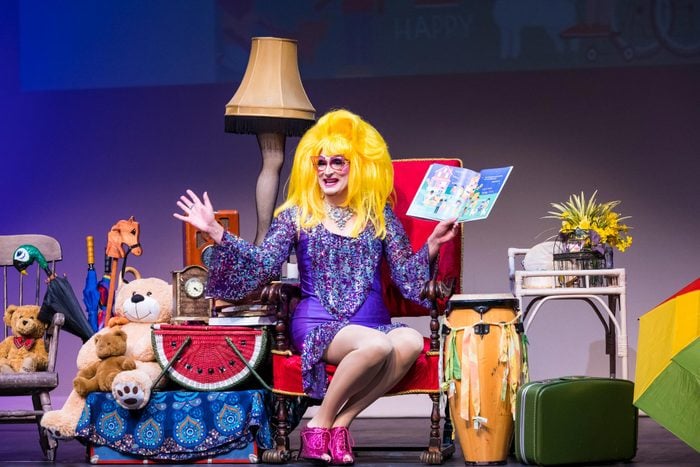
Instead of fearing the unknown, learn what drag queen story hour is really all about
Picture it: a cozy living room with an inviting red armchair, surrounded by stuffed animals, tasteful knickknacks, an antique radio, baskets, flowers, a rainbow umbrella and the soft glow of a leg lamp, like the one from A Christmas Story (which was filmed here in Cleveland). Whimsical music plays as I make my entrance and introduce myself to my guests—a theater full of children and their parents and caregivers. My name is Veranda L’Ni, and this is drag queen story hour.
It’s been 15 years since I first stepped on stage, seven years since I created the drag pride flag (one of more than 30 LGBTQ flags) and three years since I founded the Cleveland chapter of Drag Story Hour, the national nonprofit organization behind year-round literacy events. (Drag performers don’t disappear at the end of Pride Month!) We don’t simply read children’s books: We’re also providing safe spaces for kids and their families to create new memories while experiencing art together. It’s also a chance for kids to see a colorful character come to life in front of them, rather than on a screen.
Like any performer, I love a big crowd. But lately, not everyone who shows up to drag queen story hour is there to enjoy a few stories and some silly dancing. Instead, they come to disrupt our events, making false claims about who we are and what we do. But, as was the case during other moral panics throughout American and LGBTQ history, these baseless theories come from an innate fear of the unknown—in this case, what actually goes on at drag queen story hour. Whether you fall into that category, are a staunch LGBTQ ally or are simply curious to find out what the fuss is all about, allow me to be your guide.
Get Reader’s Digest’s Read Up newsletter for more current events, humor, cleaning, travel, tech and fun facts all week long.
What is drag queen story hour, exactly?
Though each event is unique, drag queen story hour programs typically consist of one or more drag performers reading picture books, singing songs and doing crafts or other activities with children at public libraries, bookstores, theaters or other venues, with their parents or caregivers also in attendance. Like actors in a play, drag performers dress up and embody a character on stage in order to tell a story. The programs typically last between 45 minutes and an hour, and they’re geared toward children ages 3 through 8, though we have families attend with infants, teenagers and everyone in between. Not every drag queen story hour is affiliated with the Drag Story Hour national nonprofit organization; there are also groups that have started putting on similar programs independently.
The Drag Story Hour organization began in San Francisco in 2015 as Drag Queen Story Hour, but officially dropped the “Queen” in October 2022 to reflect the diversity of the storytellers. Currently, there are more than 30 official Drag Story Hour chapters across the United States, plus a few in Europe and Asia.
What actually happens at drag queen story hour
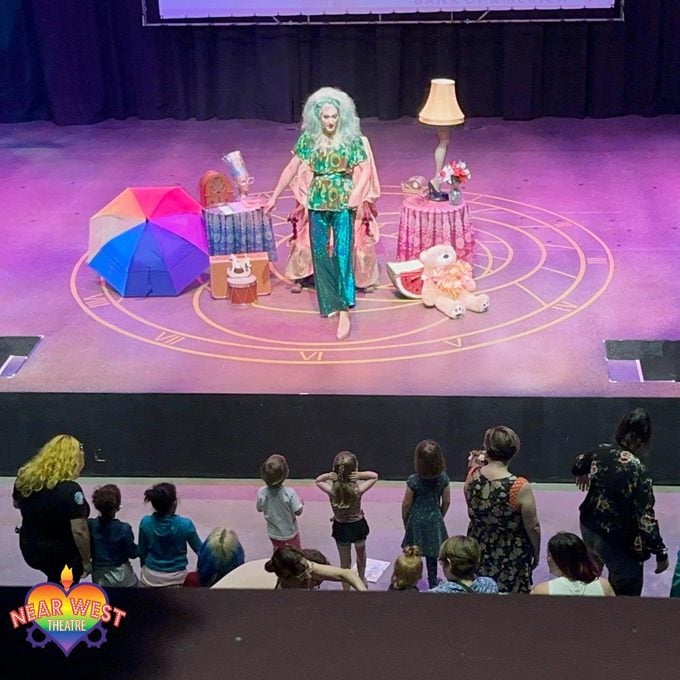
My goal was to create a live version of a kid’s TV show, and having the same set (“Veranda’s Living Room”) at each event helps establish that viewing experience for the audience. I kick off each show by welcoming everyone to my living room, then put on my special glittery cat-eye reading glasses and jump right into the first story. Behind me is a large screen where the books are projected, page by page, so the audience can read along. Once we finish the first book, we get up from our seats, stretch and then go into a movement song, like “Simon Says” or the “Hokey Pokey.” After that, I introduce our next storyteller, and the fun starts all over.
Once we’ve read three books, we close out the show and invite the audience to visit Veranda’s Living Room for a photo or two. Before they leave, each family receives a copy of one of the books we read, so they can revisit the story at home. While drag queen story hour was developed for an audience of children, it’s imperative that parents, guardians or other caregivers are in attendance. The program isn’t daycare: It’s an opportunity for adults to share this experience with their little ones and form new memories together.
Despite what you might have heard or read, absolutely nothing about our program is adult-themed. The stories we read aren’t medical textbooks, psychology books or anything contextualizing sexuality. We’re reading children’s books that talk about acceptance and love, and how it’s OK to be angry or happy or sad or like the color pink: books about the experience of being a kid.
Why drag queen story hour matters
I’ve always believed that drag performers have an immediate audience that we can use to share messages of hope, love and inspiration. In fact, having that platform is what has inspired me to continue to do drag—especially when it comes to fundraising efforts for local LGBTQ nonprofit organizations. For me, drag is about more than entertainment: It’s a way to give back to my community.
The goal of Drag Story Hour—and my goal as an organizer and a performer at the events—is to provide a safe space for reading and creativity. In Cleveland, for example, there was a void in our community that the program helped fill: bringing together those who want to share our rich cultural diversity with their family and broaden their minds. Though drag performers are involved, it is, above all else, a literacy program filled with colorful characters and fun songs.
What people get wrong about it
Drag queen story hour isn’t, nor has ever been, about grooming children. Out of all the misinformation circulating about what we do, this one is particularly infuriating, and it stems from people who have never been to one of our programs or researched what they’re really about. This deep-seated fear of the unknown clouds people’s judgment, and it can drive someone to believe the worst.
While there has always been and may always be a disdain for the LGBTQ community in the United States, over the past several years, something has shifted. Rather than keeping their views largely to themselves, more people now feel empowered to externally vocalize their hatred, creating an even sharper divide in the country.
Recently, I’ve been among the drag performers targeted by groups who actively oppose what we do. In addition to significant online vitriol, I’ve received phone calls and even threatening letters. Protesting is now common during our events, but knowing that people are coming directly for you isn’t the type of thing you ever really get used to. Their presence continues to scare me—especially because I never know whether they’re there as a passive threat or intend to get aggressive and physical.
If I didn’t doubt myself, I wouldn’t be human. But I’ve made the decision to push my doubt aside, and strengthened my resolve to continue to be a resource and voice of compassion and acceptance in my community.
Why I love participating in drag queen story hour
I’m always humbled by the families who come up to me after the shows and express their appreciation for the program. The kids are either really shy or super happy, and they want to tell me all about how much they loved the story I read or the colorful outfit I’m wearing. The adults usually lament the lack of a program like this when they were children. But growing up in the era that gave us Sesame Street, The Electric Company and Reading Rainbow, I think we were being told stories of acceptance and belonging—just in a different way.
When it comes to meeting and interacting with a 7-foot-tall drag queen in a brightly colored outfit, kids’ reactions run the gamut from inquisitive to jubilant to being very much unfazed. Some are fascinated by our costumes, our wigs or our makeup. Others are all about the story. And some just want a hug. When I see kids’ faces light up during the story or watch them dance their little hearts out during the songs, I’m witnessing pure joy and happiness that only a child can have, because they are not yet weighed down by the world. I walk away from these moments with a full heart.
After reading a book called Julián Is a Mermaid—a story about a little boy who loves the mythological creature—a young boy told me how he also really likes mermaids and was going to dress up as one when he got home. I made eye contact with his parent, who told me that they had just ordered him his own mermaid costume. It filled me with joy knowing that this child was allowed to explore and express himself in such a positive way and had the opportunity to experience what he enjoyed. Moments like these, when kids are able to share their thoughts, ideas and creativity, are what make Drag Story Hour an important part of the community. Because that’s what it’s all about: using the power of books and storytelling to make children feel loved, accepted and included.
Veranda L’Ni is the founder and chapter administrator of Drag Story Hour‘s Cleveland chapter. Standing at 6 feet 7 inches naturally, and 7 feet tall in heels, she has been dubbed “Cleveland’s tallest drag queen.”
